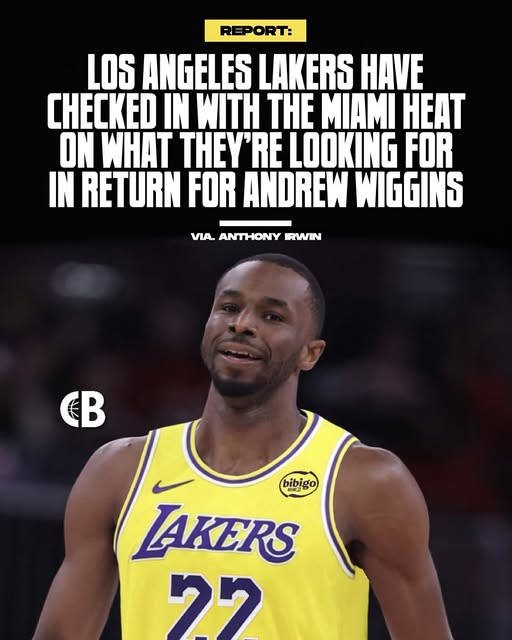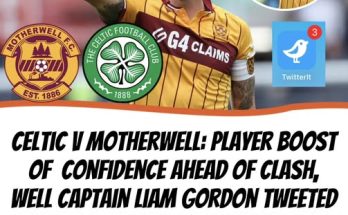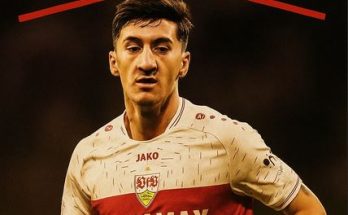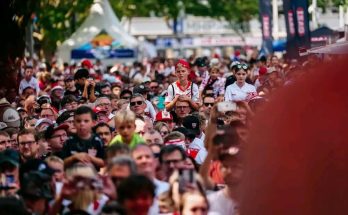The NBA offseason is always a time of intrigue and speculation, a season within a season, where team strategies unfold not just on the court but across boardrooms and phone lines. This year, one of the most compelling storylines centers on Andrew Wiggins and the surprising discussions between the Miami Heat and the Los Angeles Lakers. The prospect of Wiggins returning to Los Angeles brings with it layers of narrative—contracts, roles, ambitions, and the ever-present balance between short-term gain and long-term vision.
Wiggins, the former No. 1 overall pick in 2014, has traversed a winding path through the league. Drafted by Cleveland, traded to Minnesota as part of the Kevin Love deal, matured in Minnesota, and then finding himself in Golden State, Wiggins’ career has been one of adaptation and reinvention. He earned Rookie of the Year honors, starred on a championship team, and emerged as a steady if sometimes overlooked, two-way wing. Yet that role never quite aligned with star expectations. His move to Miami this past February, part of the blockbuster four-team trade that sent Jimmy Butler to Golden State, came with hope—could he be the final piece to elevate the Heat into true contenders?
But Miami’s season ended in disappointment. Wiggins, still adapting, averaged respectable numbers—just under 19 points per game, shooting around 37 percent from deep. Yet Miami, relying heavily on its core of Tyler Herro and Bam Adebayo, had looked to Wiggins as a complementary star who would help them push deeper into the playoffs. Instead, they suffered a sweep in the first round against Cleveland. The results have led Miami to rethink its roster construction. Emboldened by an aggressive front office, known for its strategic boldness, the Heat have begun to explore a fresh direction—one that might see Wiggins, rather than the younger nucleus, moved.
Enter the Lakers. Fresh off a playoff disappointment of their own, having fallen to the Timberwolves in five games despite the dynamic duo of LeBron James and Luka Doncic, the Lakers are in speculation mode. Their ambitions remain sky-high, with new ownership led by billionaire Mark Walter signaling increased willingness to make sweeping moves. With roster needs clear—especially at the wing and interior positions—and a desire to maximize the prime years of LeBron and Luka, the Lakers began quietly pressing Miami for information on Wiggins. What’s the price? Is he available? Would the Heat deal him?
Annual contract considerations come to the forefront. Wiggins is entering a season with a nearly \$28.3 million salary, followed by a player option worth just over \$30 million for 2026–27. His deal was originally signed in Golden State, a commitment to his prime years. From Miami’s perspective, offloading that salary could create flexibility, particularly if they’re targeting a marquee acquisition or seeking cap space to adjust the roster. On the Lakers’ end, it’s about risk and reward—paying luxury tax and absorbing a large contract for a wing who could stabilize their rotation, defend at a high level, and provide scoring on the perimeter.
Indeed, league insiders have indicated that the Lakers have “checked in” with Miami, not merely out of curiosity but genuine interest. The competitive calculus is clear: if the Lakers can make their core more dynamic and deeper around LeBron and Luka, adding a versatile veteran like Wiggins holds appeal. But price matters. The Heat seem open but suggest the cost won’t be trivial. Would Miami demand draft picks, young talent, or multiple rotation players? Would they insist on protection-laden picks? And what about Wiggins himself—does he see returning to a championship-chasing Lakers team as attractive?
Beyond the financial eye candy, the narrative is about fit. Wiggins brings size, athleticism, and above-average defense—a perfect complement to LeBron and Luka, both of whom draw double-teams and operate best with reliable wings spacing the floor. His experience, including playoff exposure and a championship ring from Golden State, adds intangible value. But his contract, his inconsistent shooting, and his middling playoff impact mean the Lakers aren’t likely to overpay. Internal deliberations point to caution: yes, Wiggins checks boxes; no, he’s not a must-have unless the prize is worth the price.
For Miami, trade conversations offer an opportunity to pivot. With Wiggins available and draft assets still in hand—most notably their own 20th pick—they could maneuver for a player whose skill set complements Herro and Adebayo differently. Maybe they pursue a stretch big, a secondary playmaker, or even accumulate assets to position themselves for next year’s free agency. What is clear is that Miami’s front office is proactive; rebuilding around youth and draft currency isn’t a failure, it’s evolution.
On the Lakers saga’s flip side, Wiggins’ contract is a double-edged sword. Making that kind of financial commitment locks them into a veteran payroll, potentially limiting their options in other areas like depth additions or a more significant splash. Especially with future flexibility already impacted by LeBron’s and Luka’s large deals, adding Wiggins reduces wiggle room. Then again, that might be precisely why they’re contemplating it now—a chance to maximize current window before more financial constraints emerge.
League chatter also mentions Wiggins in the broader trade market. He’s still a player with upside, and if the Heat maintain flexibility, other teams might also pitch. Toronto, Utah, Milwaukee—each could view Wiggins as a veteran fill-in or salary balancer. But the Lakers are unique in that they offer him a stage and a narrative fit: previous championship lanes, renewed glory in Los Angeles, and a reunion with a legacy-making franchise.
Amid the business and back-channel minutes, we can almost visualize the phone call: “Pat, what are you looking for?” “Give us pick 20, maybe a young wing, sweeten with a second.” “Okay, here’s our mirror offer…” And so the dance begins. For fans, it’s a thrilling prospect—Wiggins in purple and gold has star appeal. His blend of athletic drives, smooth catch-and-shoot threes, and defensive wingspan fit a Lakers mold desperate for perimeter versatility.
Still, nothing is settled. Miami could reject initial offers, believing they can mine more value. The Lakers might walk away if cost turns steep or interior needs outweigh wing additions. And Wiggins—whether he’d choose the Lakers or prefer his role in South Beach—remains a factor. Player options matter: does he want to entertain the Lakers now, or stay put and reassess next summer?
In the larger context, this move reflects a shift in NBA roster building. Cash-rich teams like Miami and Los Angeles are using cap flexibility to shepherd change. Miami once bet its future on Jimmy Butler and, after a period of contention, if they pivot now and rationalize around youth or upcoming signings, it’s strategic. The Lakers, while constrained, still leverage branding and ambition to lure proven talent—even at significant cost.
The narrative tension is compelling: Wiggins, the veteran oscillating between roles, potentially returning to the Lakers where franchise lore runs deep. Miami, embracing evolution and mixing youth with opportunity. Lakers, chasing balance between championship window and salary pragmatism. And league-watchers, salivating at every rumor about who gives what for whom.
As bell rings for July and the draft looms, expect more teasers. Maybe Miami dangles the pick along with Wiggins—an enticing bundle. Maybe the Lakers throw in a prospect or two. Maybe whispers of side deals emerge: player options, sign-and-trades, or logistical maneuvers tied to later summer moves. Whichever way this unfolds, it highlights the fluid chess match that is NBA offseason strategy.
Some deeper takeaways:
First, Wiggins as a piece isn’t about star power—it’s about role. He’s not the primary playmaker, but a glue wing who can defend multiple positions and move off-ball—a chess piece for either contender.
Second, finances speak louder than narratives. At nearly \$30 million a year with a player option, the financial baggage is real. But both Miami and LA seem willing to absorb it if strategic upside outweighs cost.
Third, youth vs. veteran balance. Miami leans young; LA leans experienced. Wiggins straddles that line, offering veteran polish and playoff know‑how—if not rising potential.
Fourth, trade talks reveal league mentality. The Lakers “checking in” signals intent; Miami “making available” signals opportunity. The interplay shows how conversations matter as much as trade sheets.
Finally, fan resonance. Wiggins returning to LA would be storybook—former No. 1 pick, championship veteran, walking back into purple and gold. For Heat fans, dealing him might sting, but if it propels youth, endorses depth, or funds a future star signing, the heartbreak may fade.
In the end, the Wiggins saga is confirmation of how modern NBA returns to its financial roots. It’s less about raw talent and more about contract curves, option timing, age curves, brand pipelines, and advanced fit metrics. Wiggins’ value isn’t just scoring—it’s spacing, defense, cap sheet fill—and both Miami and LA see potential leverage in that.
If a trade eventually happens, how we will judge it depends on players involved and outcomes. If Miami lands a young contributor or a second‑round sleeper, it’ll be heralded as savvy. If LA transforms and makes noise next season, Wiggins becomes a hero accessory. If neither happens, this becomes another what-if vignette in offseason lore.
Tonight, the calls continue. The phones buzz. Draft picks hover. And Andrew Wiggins remains the fulcrum—a player, a contract, a narrative—spinning between two iconic franchises. Whether he stays in Miami or heads West, it’s a key moment in defining both teams’ direction: one hoping to build, one aiming to win now. The brilliance of this moment isn’t just the trade talk—it’s the microcosm of modern NBA economics, strategy, and storytelling.
So as the schedule re‑sets and the summer heats up, keep one eye on the Heat, one on the Lakers, and one on the calendar. These rumors may crystallize before training camps open—or simmer into the background. Either way, they have already woven a rich tapestry of anticipation. And for all involved—front offices, fans, and players alike—that is where the game truly begins.



